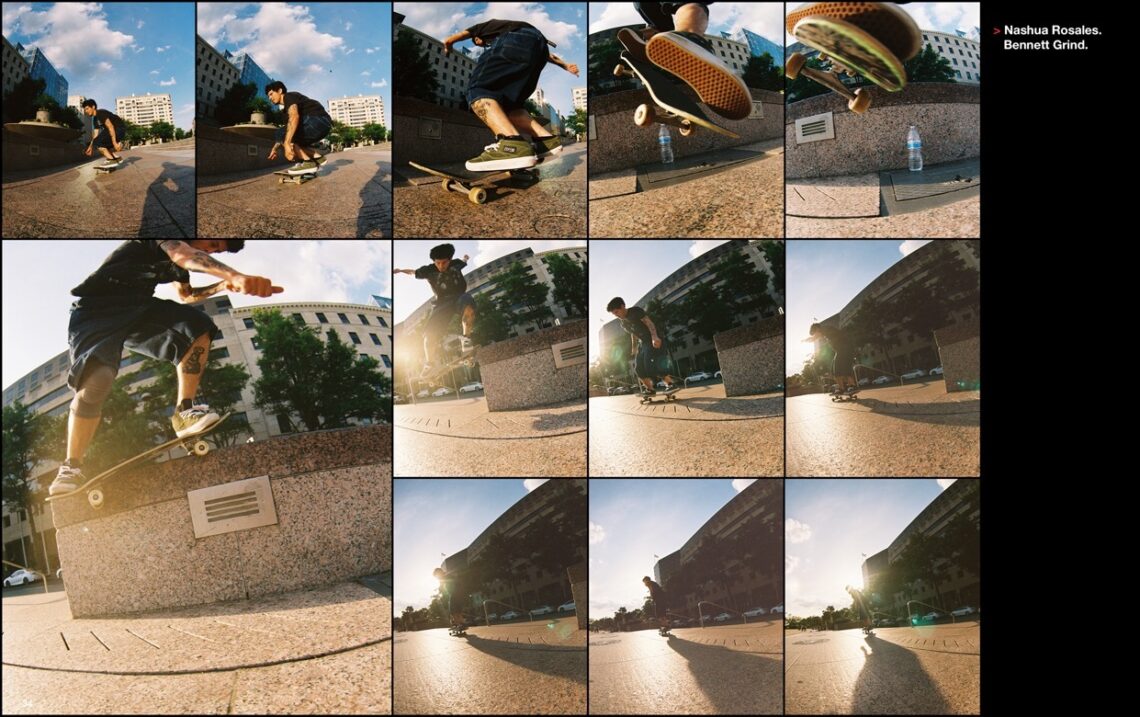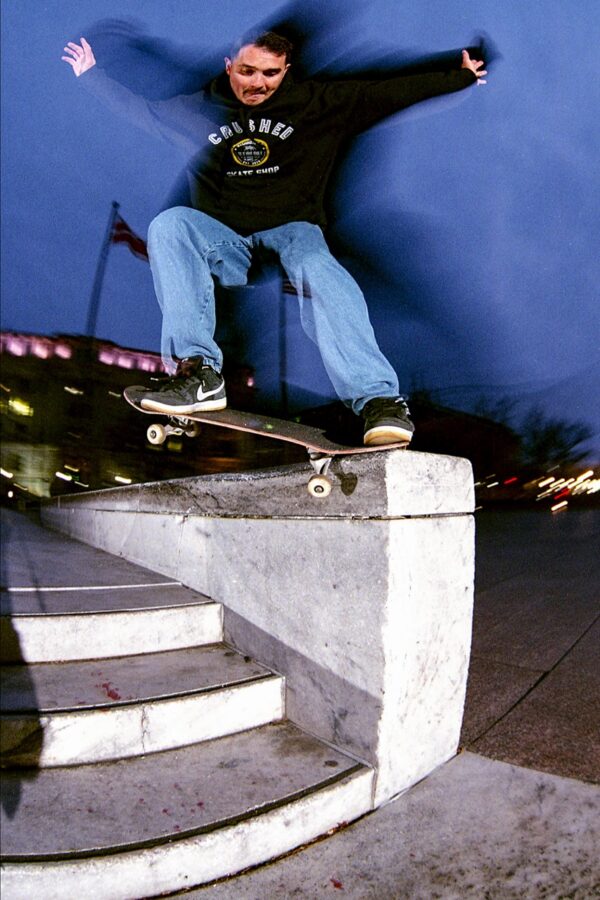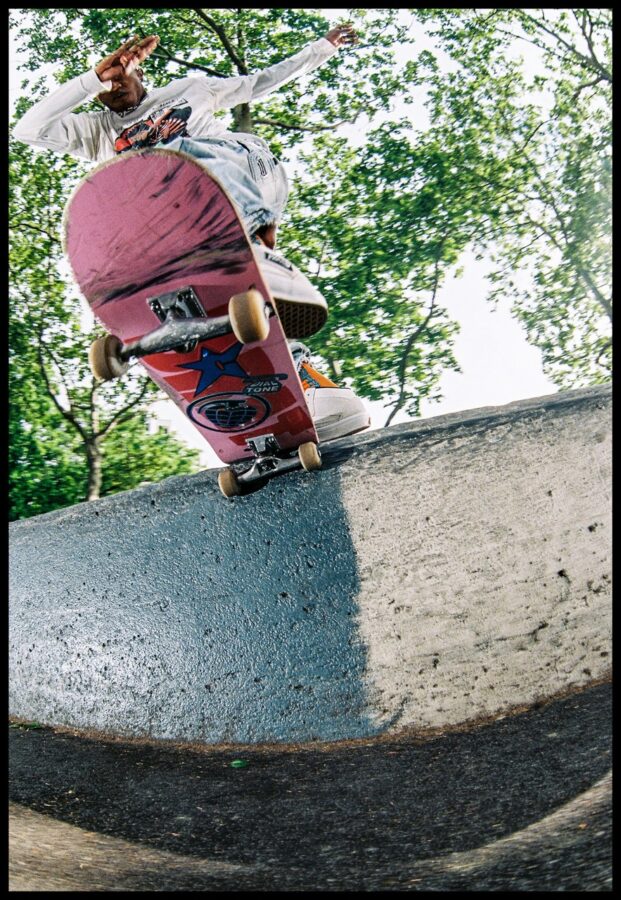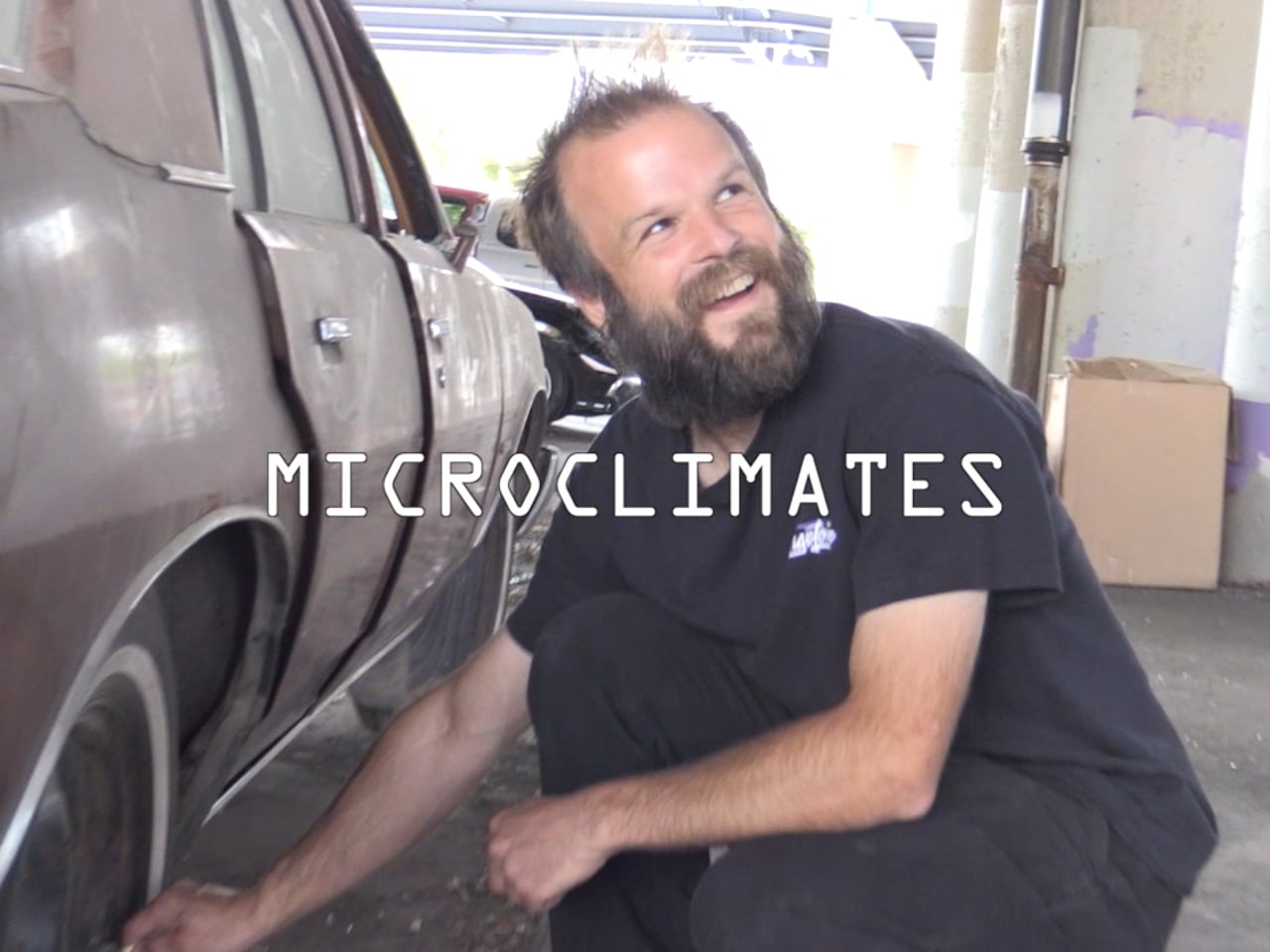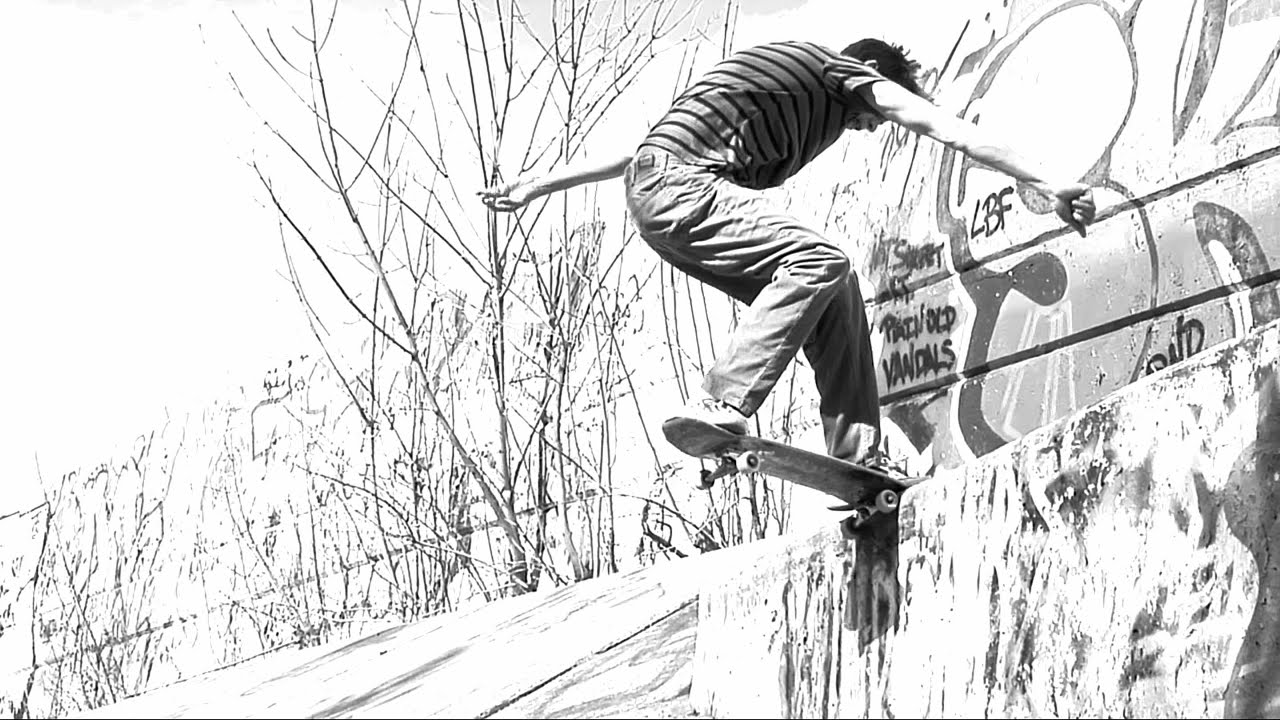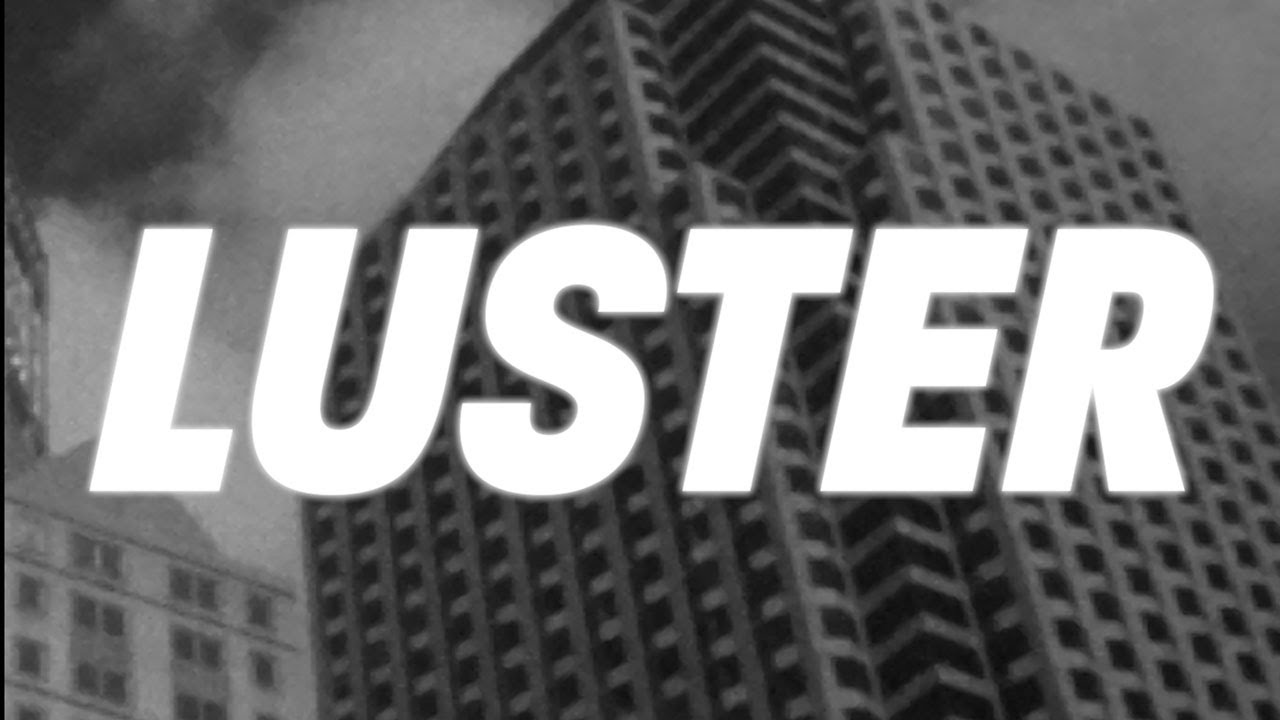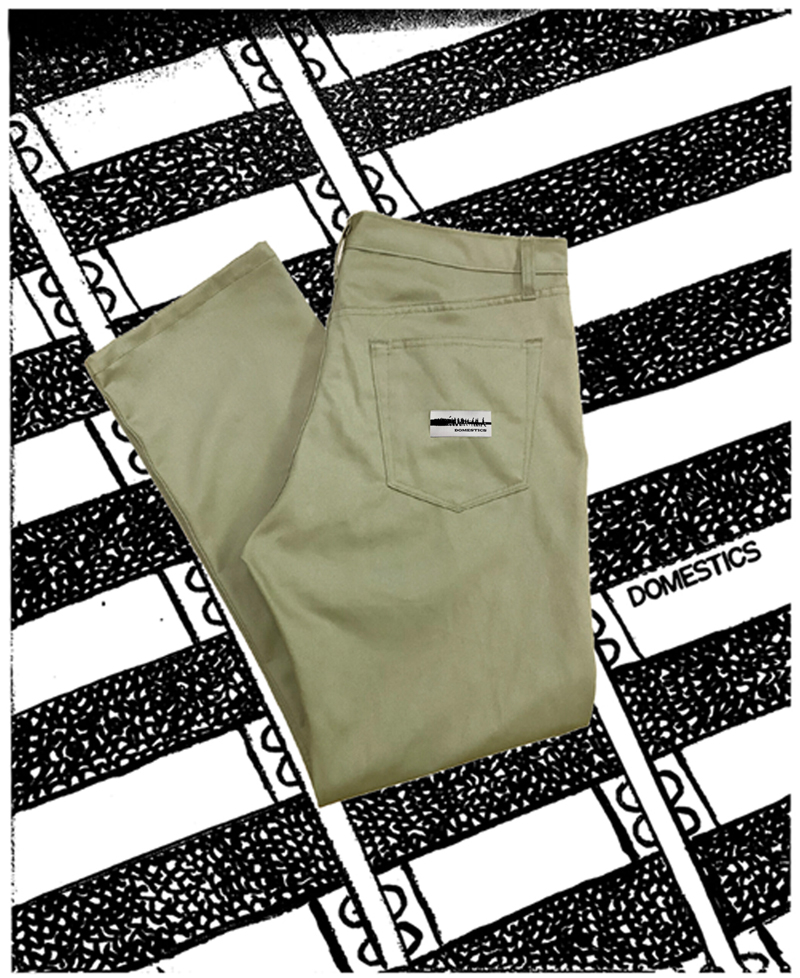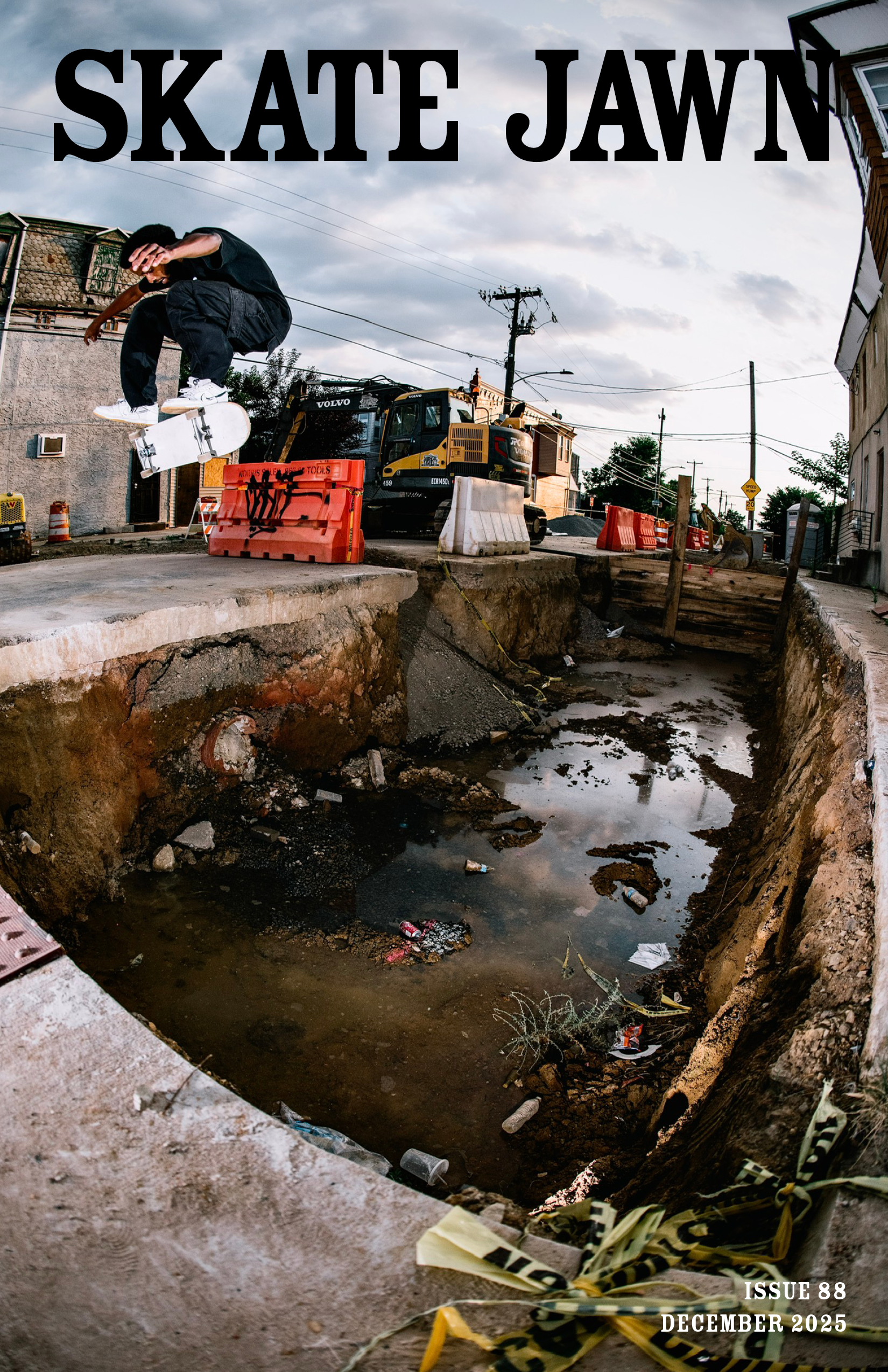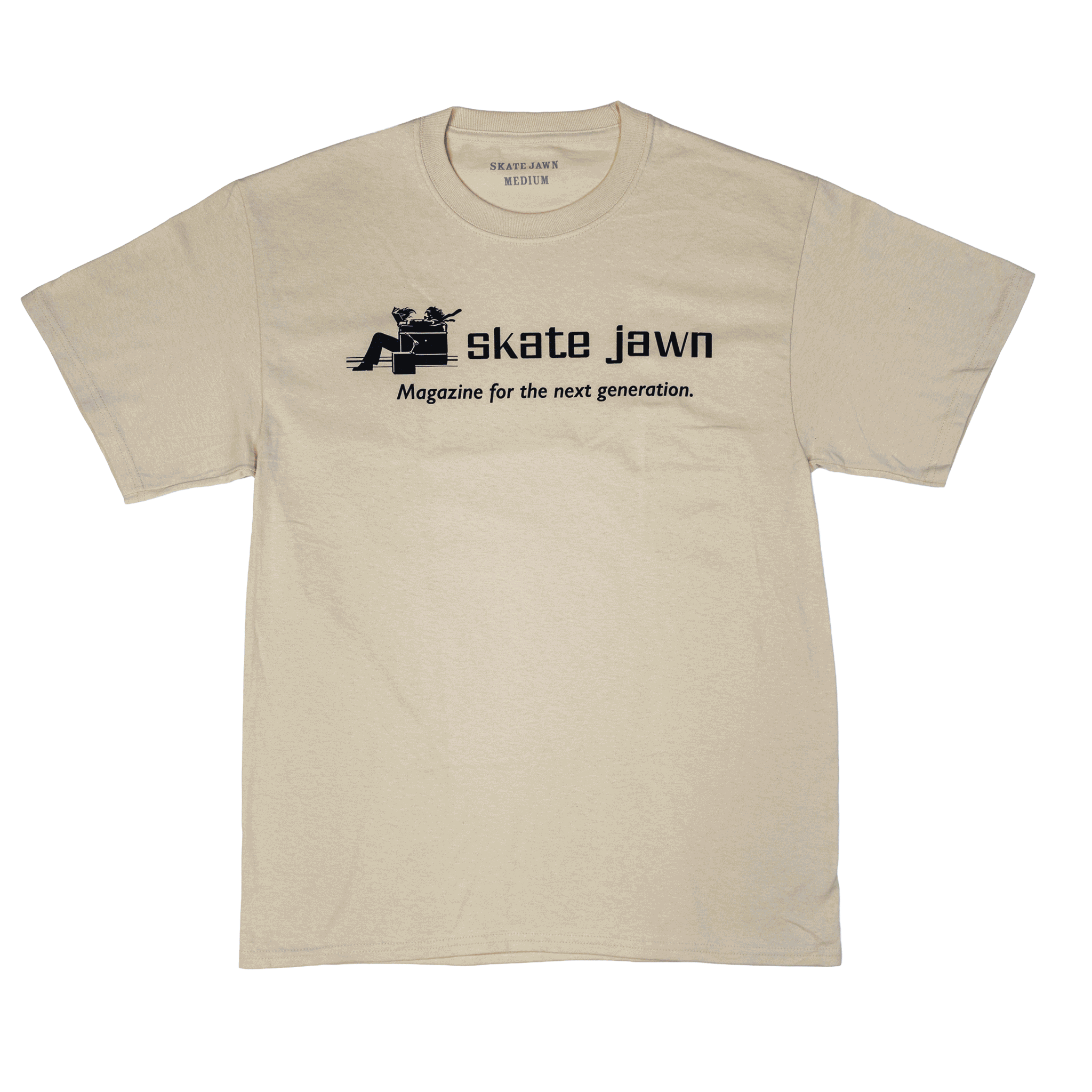Words by Zach Moeller and Tom Alexander
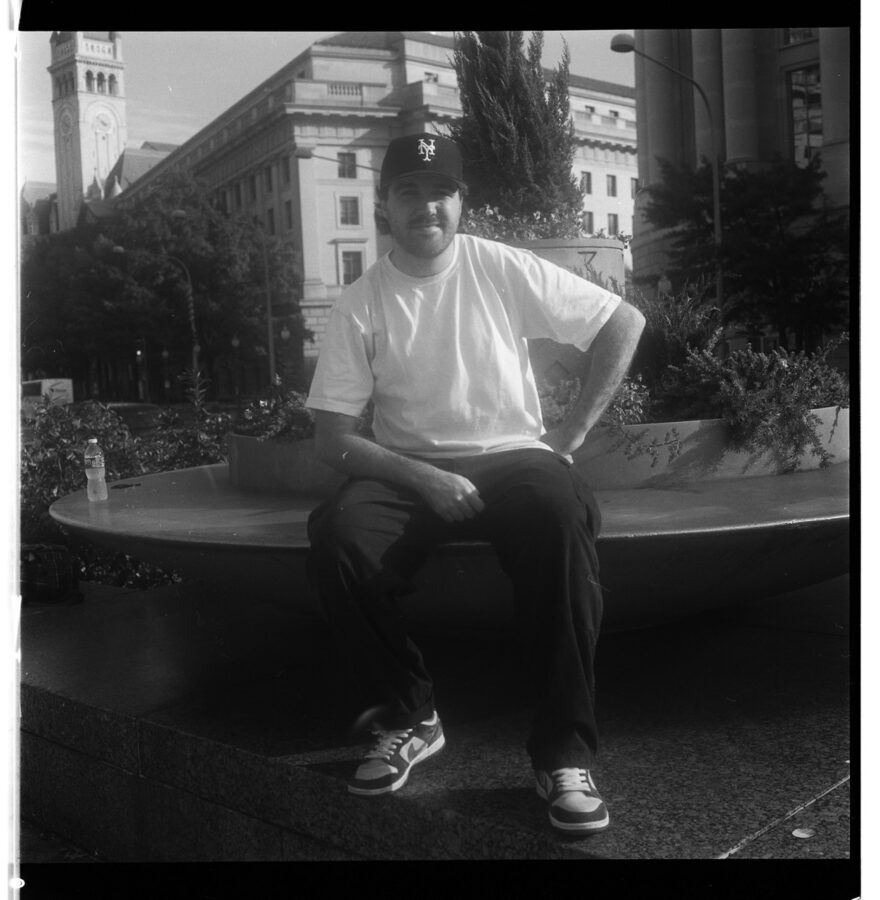
TA: Why is this interview starting at 11 pm?
OB: Because today I had my library event, I shot a photo with Atem, and then it started to rain. So I went home, passed out, and took a nap around 5ish. I woke up to four missed calls at 10.
ZM: Generic shit first: Where are you from, and how did skating first come into the picture?
OB: Iʼm from a town an hour north of NYC, a place called Cornwall. I started skating because not a lot was going on in my hometown, and I remember biking around and always seeing this group of older guys skating and thinking it was really cool. I was probably 11. I wanted to skateboard, but all of my peers were into longboarding, which I thought was really wack. So I started hanging out and skating with those older dudes.
ZM: And what about photography?
OB: I had been skating for about a year or two. This is around 2011, 2012, right when Tumblr is popping off. So I have this Tumblr account and Iʼm following a few pages that would post skate scans and old skate photography, and through that I got into blogs like The Chromeball Incident, Science Versus Life, and others that posted photography from the ʻ90s and early 2000s. I was always stoked on photos like that – thereʼs just a certain crunchiness to those old photos. Modern photos I was seeing at that point were still cool, but they lacked a certain quality that photos back then had. So I decided I wanted to start shooting with film, and sometime around 2014 I bought my first point and shoot camera.
ZM: Do you remember what type of camera that was?
OB: I do, it was an Olympus Trip 35. Itʼs a really cool camera because itʼs solar powered. It has all these cells and a panel around the lens. I started taking Metro North down into the city and would just walk around and take photos. Looking back, it was obviously little kid photos, just shooting everything. I was so hyped on it. But over time, especially after moving to DC, I really narrowed it down to taking skate photos. Iʼm actually trying to get back into taking photos of everything.
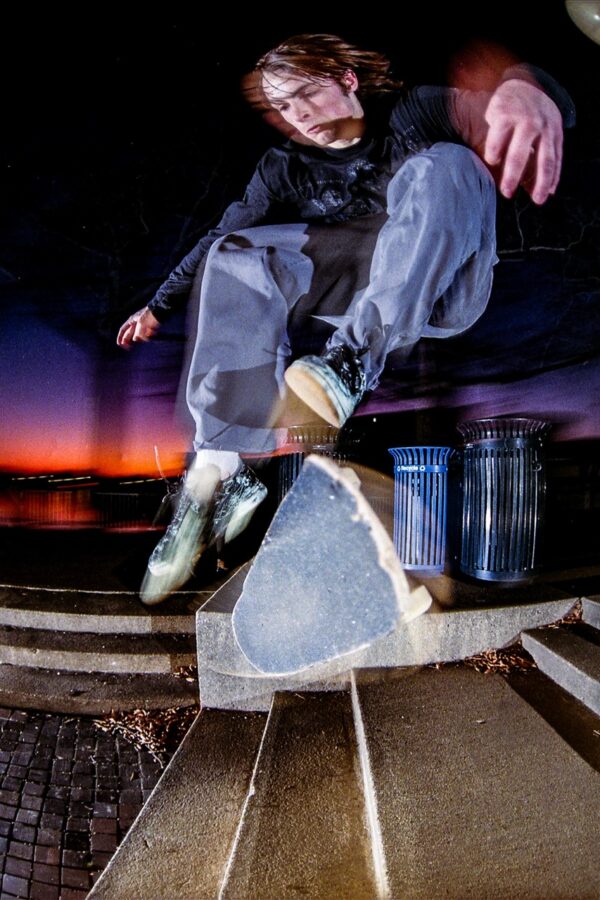
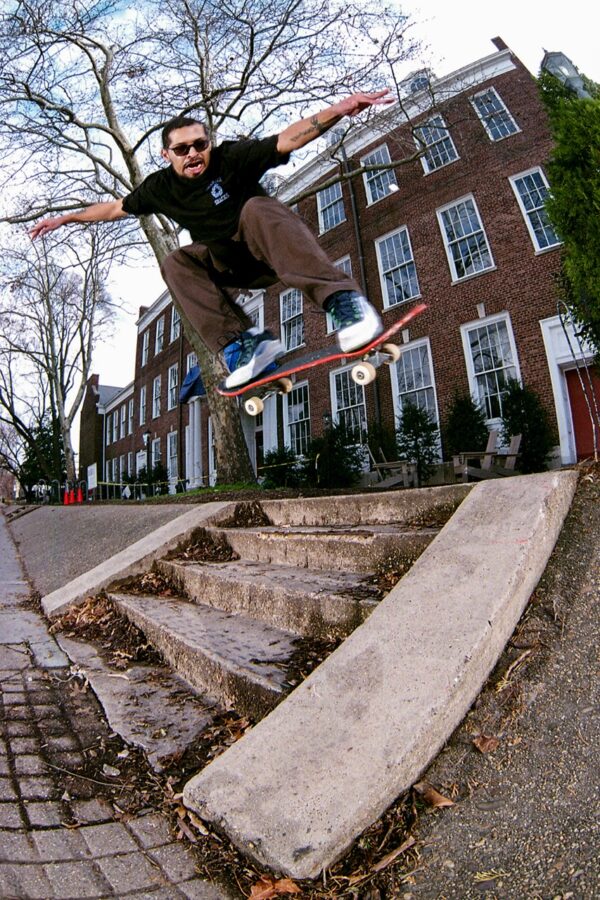
ZM: Want to talk about the library event from today and what you were doing there?OB: My day job is working for the Smithsonian where I digitize general collection and archival materials for this thing called the Biodiversity Heritage Library. I sit at a scanner and scan old books and archival materials. I realized that you can do the same thing with skateboarding – you have folks like Science Versus Life and Look Back Library doing great work to preserve skate history. I took what Iʼve learned from my day job and thought about how I can apply it to my role in skateboarding. So today I worked with the DC Public Library and put on a workshop to teach people how to digitize DV tapes or skate photographs, anything on film. DC has more than 40 years of really amazing skate history that deserves to be preserved.
ZM: What brought you to DC originally?OB: After high school, I went to SUNY college in Brockport, right outside of Rochester. During my
sophomore year, SUNY had this internship program in DC, which I applied for and got. I took an unpaid internship at a Naval Archive in the Washington Naval Yard. So itʼs 2018 and I get here, and instead of doing the stereotypical intern networking in DC, I decide I just want to skate the plaza and be as open to conversation as I can be with anybody there.
ZM: I’m sure you were already hip to DC’s skate legacy at this point?OB: Yes, I had read up on as much of DCʼs skate history as I could. I remember reading Smallsʼs
Quartersnacks interview, which looks at the etiquette of skating the plaza. You have to know the etiquette and respect the locals. You donʼt want to be a kook. I also was a huge fan of Reese Forbes, to the point where the Talking Heads song from his part in Eastern Exposure 3 is burnt into my consciousness. Anyway, after skating plaza for a couple of weeks, the first people I ended up meeting there were Smalls and Classic Chris. They told me what was good with plaza and helped me come out of my shell when it came to meeting people.
TA: Before you came to DC you lived in a hockey house in upstate NY, right? Was that anything like living in a skate house?
OB: Before skateboarding, my identity was really wrapped up in hockey. When I lived in Brockport I played for the club team there, and during that time I lived in a hockey house, pretty much a glorified frat house. It was insane. Our house was right across the street from one of two bars in town. Weʼd sit in our driveway and watch drunk college kids fight. There was always so much insanity happening, completely nuts. To answer your question, skaters kind of act the same way living together. I donʼt want to say things get out of control, but it can definitely get pushed that way. Hockey players also smoke an insane amount of weed. Skaters who think they smoke a lot of weed have nothing on hockey players.
ZM: You’ve mentioned you started to really focus on taking skate photography seriously after getting to DC. Was it the city, the crew, or a mixture of both that led to that?
OB: A lot of my outlook with photography is owed to Nnamdi and how seriously he takes filming and his dedication to making sure his videos look really good. A lot of those ethics I took and applied to my photos. Itʼs something you hone over time. I really wanted to be productive while also capturing skating in a very specific way. I was really influenced by Ryan Geeʼs photos, and wanted mine to look similar. When I first got here I was shooting on my dadʼs Penta SP1000, with this Russian bayonet mounted fisheye. I was learning and making mistakes shooting on film, just having fun skating with my friends.
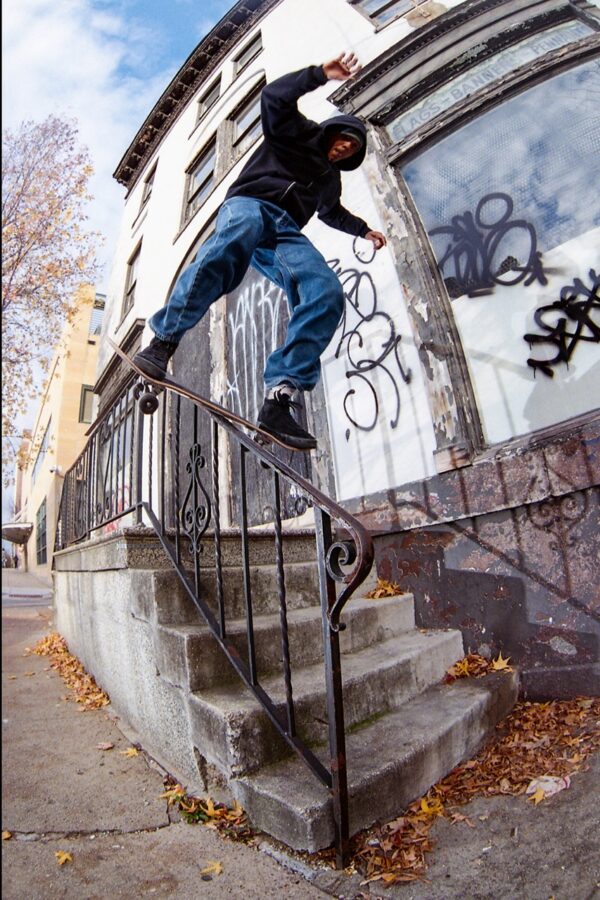
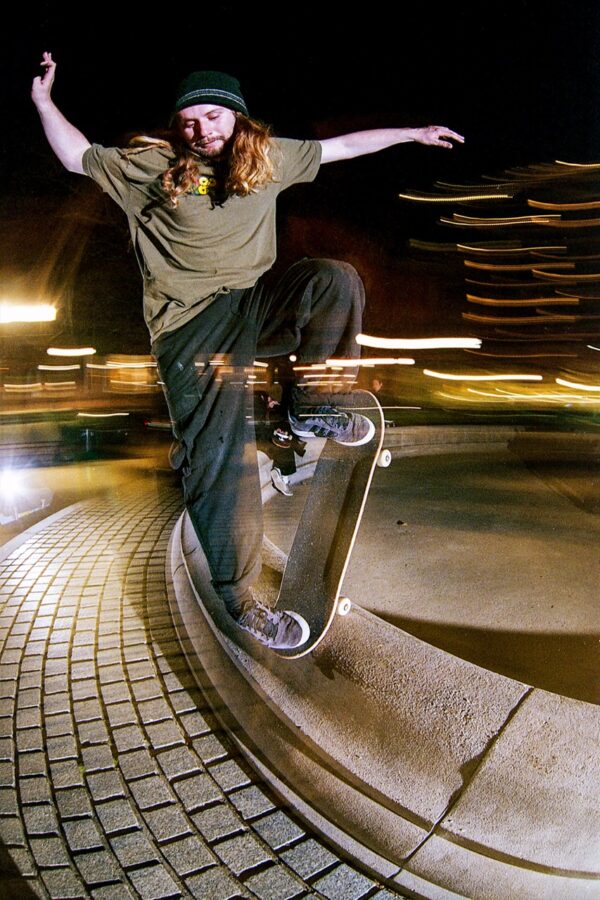
ZM: What’s up with that Russian fisheye?
OB: It was an M42 mount that screwed on. Itʼs the cheapest fishey you can get. I learned on Skate Perception that 16mm fisheye is the standard for shooting 35mm, so it worked. The first one I got I won off of a Goodwill auction.
ZM: What’s your setup these days?
OB: I use a Nikon F4. Itʼs a camera that came out in 1989. It has all the knobs and whistles of a traditional film camera. I now use a Nikon F mount 16mm fisheye, which similarly to my first fisheye, is also Russian. I also have a 26-85mm long lens as well. Oh yeah, and canʼt forget the Sekonic light meter I use.
TA: Walk us through your shooting process from start to finish.
OB: I normally get a specific idea in my head, whether itʼs thinking of a spot or a skater. Iʼll use the example of what I shot today; there is this photo of Jahmal Williams doing a back tail on a bench at a T stop in Boston. Itʼs clearly in the T station, itʼs shot from down low, and just everything about it is sick. So today Iʼm skating with Nnamdi and my friend Atem and it starts raining, so we decide to go skate down in the Metro. I reference that photo in my head, which is the first step. The second step is convincing the skater to try what I have in mind. Sometimes itʼs really hard to convince someone to do something. Once theyʼre convinced, the first thing Iʼm doing is taking a light reading. I set my flashes up and start thinking about how I can use the light. I donʼt have tripods so I normally have to improvise. Then I find my angle sometimes laying out flat to make the spot look bigger, and after that itʼs just about adapting in real time. Sometimes you need to adjust each try. Usually Nnamdi is filming the trick as well, so we work as a team and communicate where weʼre at so we donʼt get into each otherʼs way. Itʼs pretty sick because when the video drops and you see the flash in the clip, you know that the photo is the make. Iʼm trying to be genuine with it.
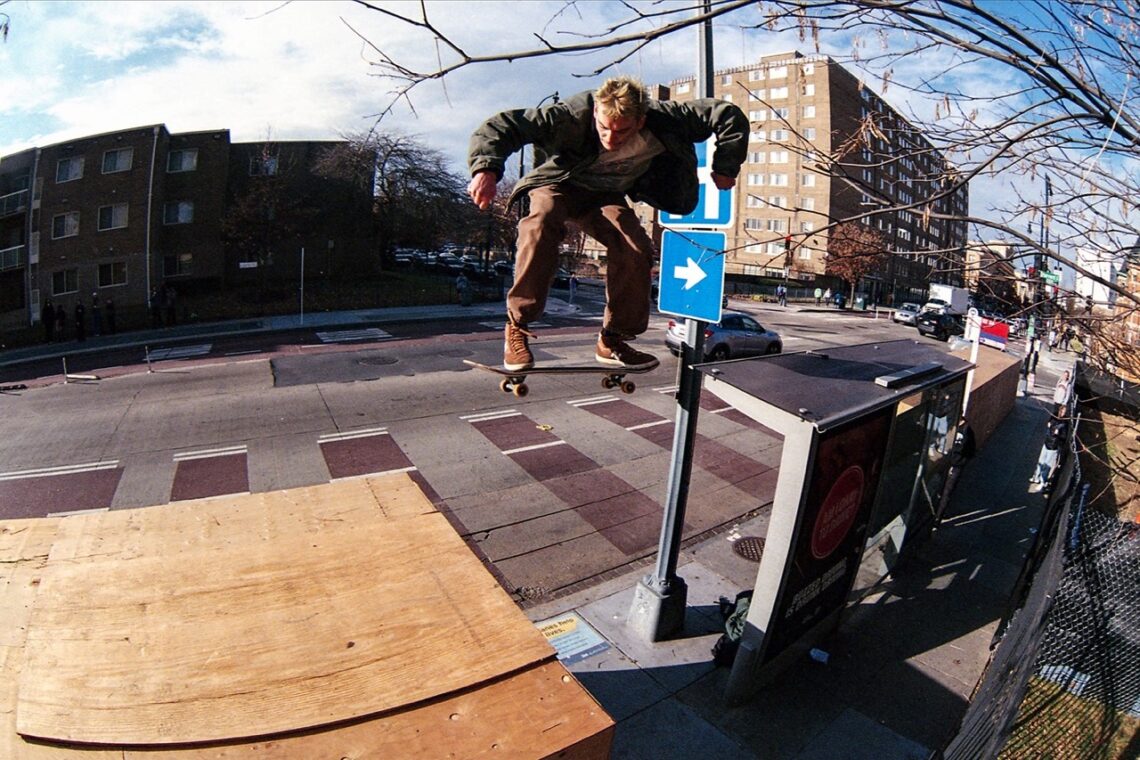
ZM: You mentioned Ryan Gee earlier, but what other photographers are you drawing inspiration from?
OB: I have to say, my friends. Kevin Horn out on the West Coast, heʼs a great photographer. Matt Maydoney in Boston. Derrick Lambertz out in Iowa. A lot of my influences come from classic photographers, like Reda, Wig Worland, or anyone involved in early British skate mags like Sidewalk. From a non-skating perspective, I really like my friend KJ Thomasʼs eye for shooting. The way he shoots street photography is amazing.
TA: Tell us about the book you’re working on.
OB: I started coming to DC in 2018 to visit and moved here right before COVID hit. So itʼs been about six or seven years that Iʼve been hanging down here with the people I skate with. The book is pretty much a collection of my favorite photos Iʼve shot in those years in one format. As a photographer I think itʼs important to put out a book or zines, anything in print. Over time my photos have gotten better and the skaters around me have been getting better too. Iʼve met more people with different types of styles, and I think that the newer scene in DC should be highlighted. My book will be photos that reflect that. Itʼs being published by Shining Life Press in DC, a great group of guys who publish a lot of DIY punk music stuff. I still think itʼs wild they want to do a book with me.
ZM: Why do you prefer shooting film over digital?
OB: With film there is more of a reward. When you develop it and you see that youʼve manipulated light just enough to nail a shot, there is nothing like it. It feels like learning a new trick. I really donʼt have much experience with digital anyway. I learned on film, and through making mistakes I figured it out over time. Those old photos that inspire me have a unique characteristic that a lot of digital photos just donʼt have. That could just be me though, there are so many photographers who shoot digital that are killing it.
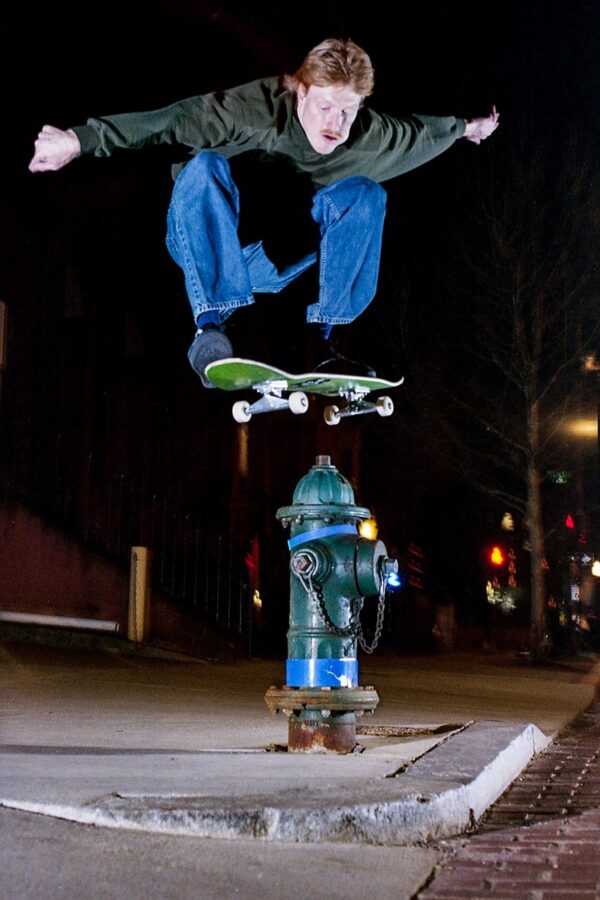
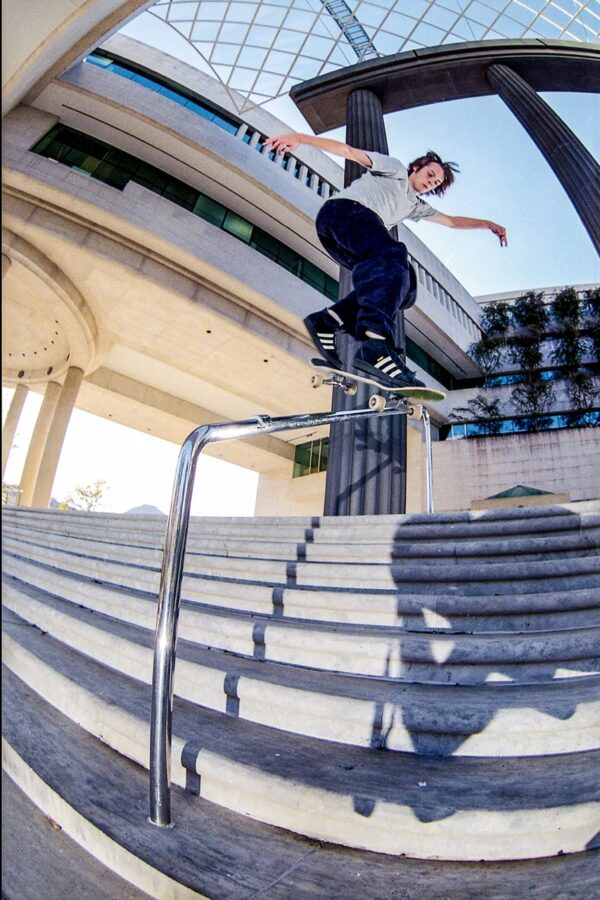
ZM: How did you find out your photo of Rashad ended up as the cover of issue 72?
OB: I was working two jobs at the time, and I was in between shifts and saw the IG post. It took a second to register. At first I was like, “Wait a minute, thatʼs Rashad. Wait a minute, I shot that!” Shooting with Rashad is awesome. That whole experience just made me appreciate skating with my friends so much more. It was definitely an honor to make the cover.
TA: What’s something you want to see more of in skating?ZM: And something you want to see less of?
OB: Might be controversial, but I am not a fan of hippy jumps. Just ollie the damn thing. Especially for photos, ollies just look so much better.
ZM: So more ollies, less hippy jumps is what I’m hearing?
OB: Exactly. Wallies are cool, wallrides are cool, so much is cool. But I see hippy jumps and just think,
“nah.”
ZM: Where can people see your work?
OB: In this day and age Instagram is the best way to share photos, so my IG page. But this is also why Iʼm making my book. I want to make my photos available physically, somewhere you can see them in a bigger format. Photos look so much cooler when theyʼre not on a screen.
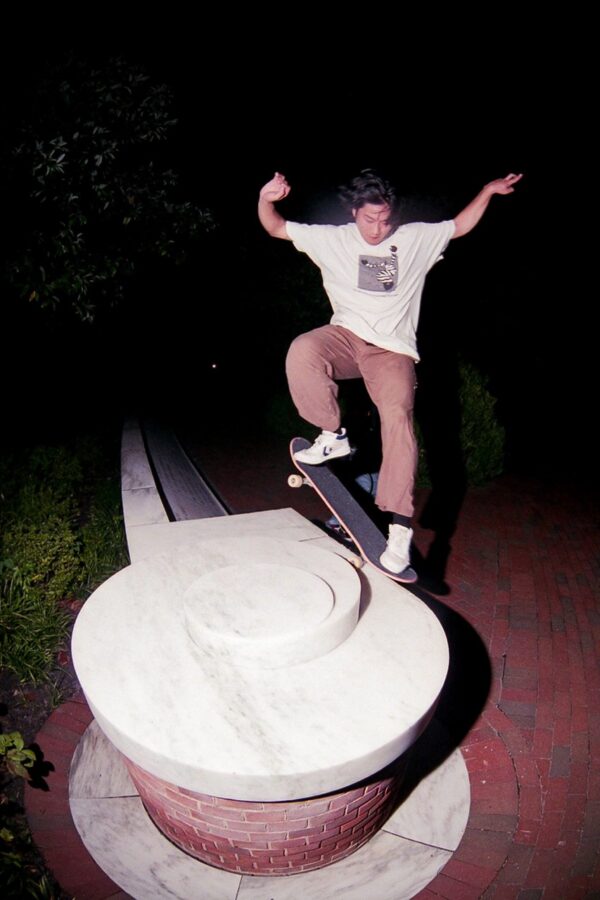
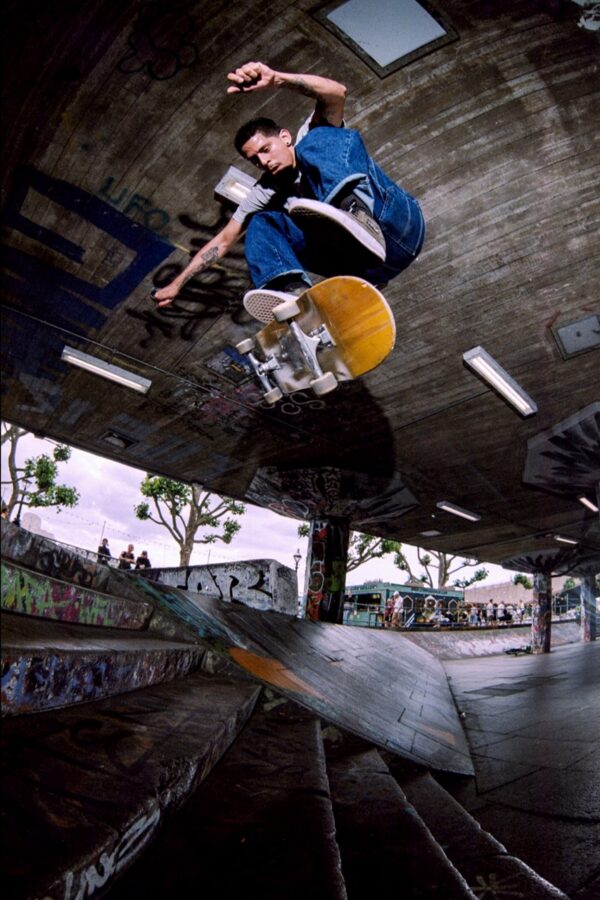
TA: I was told that when you were young you were forced to dress up in a caterpillar costume that changed into a butterfly and you hated it so much that you cried. Do you not like butterflies? Or do you just hate personal growth?
OB: To this day I am not a ceremonial person. I get so into my own head when I have to go to any type of function. Wow, this is from preschool – did you talk to my mom? Anyway, it was this ceremony where you had to be a caterpillar and turn int a butterfly. I thought that was the corniest shit. Iʼm literally on the stage crying, just thinking itʼs so dumb. Even as a kid I knew that was so stupid.
ZM: Anyone you want to thank or shout out?

